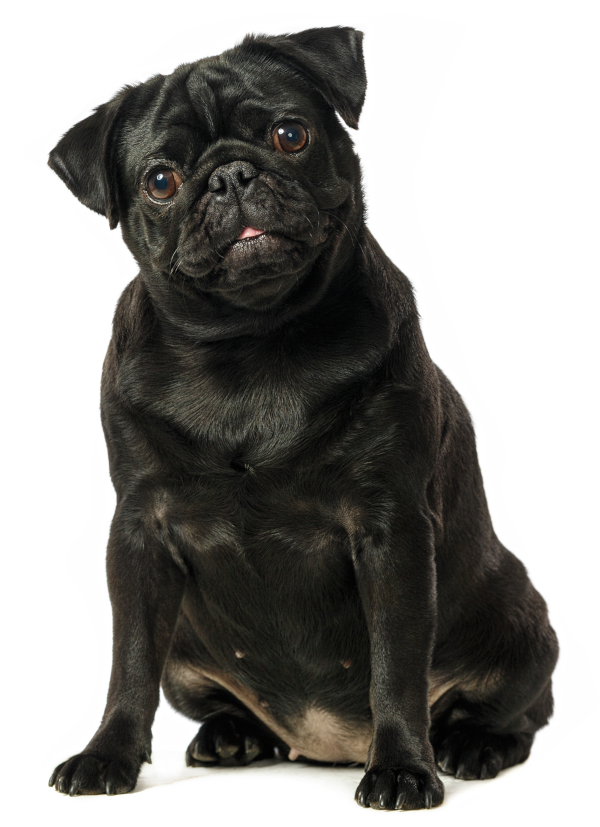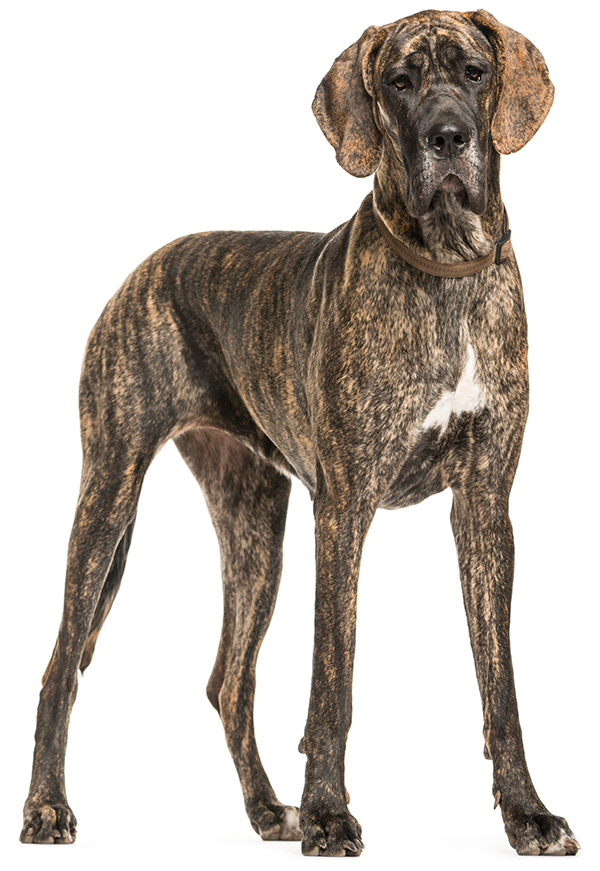Quick Summary

Click here for Price and Turnaround Time
Phenotype: Dogs with the Dominant Black variant display solid coat coloration in fully pigmented areas or, in some cases, display a brindle pattern.
Mode of Inheritance: Autosomal dominant
Alleles: N = No Dominant Black, K = Dominant Black
Breeds appropriate for testing: Many breeds
Explanation of Results:
- Dogs with N/N genotype are expected to be able to express the Agouti gene. They may display black pigment in their coats, but they can also exhibit a variety of other colors and markings including those produced by hairs with alternating bands of color (Agouti). They cannot transmit this dominant black variant to any of their offspring.
- Dogs with N/K genotype are expected to be unable to express the Agouti gene or exhibit reduced Agouti expression. Dogs with this genotype are sometimes brindle. If not brindle, they are expected to display solid eumelanin pigmentation (no pigment banding in the hair shaft) in colored areas on the body. Overall appearance is also determined by genotype at MC1R (E Locus), Brown (B Locus), merle, and other loci. N/K genotype dogs will transmit this dominant black variant to 50% of their offspring.
- Dogs with K/K genotype are expected to be unable to express the Agouti gene, leading to solid eumelanin pigmentation (no pigment banding in the hair shaft) in colored areas on the dog's body. Their overall appearance is also determined by genotype at MC1R (E Locus), Brown (B Locus), merle, and other genes. These K/K dogs will transmit this dominant black variant to all of their offspring.
Results of this test can be submitted to the OFA (Orthopedic Foundation for Animals)
Dog Coat Color - Basic Panel (All breeds)
$100 per animal
Additional coat colors $15 per test
Dog Coat Color - French Bulldog Panel
$105 per animal
Additional coat colors $15 per test
Dog Coat Color - Bulldog Panel
$80 per animal
Additional coat colors $15 per test
Dog Coat Color - Great Dane Panel
$80 per animal
Additional coat colors $15 per test
Dog Coat Color and Type - Havanese Panel
$115 per animal
Additional coat colors $15 per test
Sample Collection
Dog DNA tests are carried out using cells brushed from your dog's cheeks and gums. The preferred cytology brushes are sent to you by mail, or you may provide your own brushes. For accepted alternative brushes, click here
We recommend waiting until puppies are at least three weeks old before testing.

Step-By-Step:
- Make sure the dog has not had anything to eat or drink for at least 1 hour prior to collecting sample.
- When swabbing puppies, isolate each puppy from the mother, littermates and any shared toys for 1 hour prior to swabbing. Puppies should not have nursed or eaten for 1 hour prior to collecting sample.
- If collecting samples from more than one dog, make sure to sample one dog at a time and wash your hands before swabbing another dog.
- Label brush sleeve with name or ID of dog to be sampled.
- Open brush sleeve by arrow and remove one brush by its handle.
- Place bristle head between the dog’s gums and cheek and press lightly on the outside of the cheek while rubbing or rotating the brush back and forth for 15 seconds.
- Wave the brush in the air for 20 seconds to air dry.
- Insert brush back into sleeve.
- Repeat steps 5 - 8 for each unused brush in sleeve on a fresh area of cheek and gums. Make sure to use and return all brushes sent by the VGL. In most cases, it will be 3 brushes per dog. If using interdental gum brushes, please note that the VGL requires 4 brushes per dog and only moderate or wide interdental gum brushes are accepted.
- Do not seal brushes in sleeve.
- Place all samples in an envelope and return to the address provided.
ATTENTION:
- Do not collect saliva/drool – the key to obtaining a good sample is getting cheek cells on the swab
- Do not rub swab on the dog’s tongue or teeth – this will result in poor quality sample
- Do not collect a sample from a puppy that has recently nursed – the mother’s genetic material can rub off on the puppy’s mouth and contaminate the sample

The wide variety of coat colors in mammals is achieved by the production of two pigments, eumelanin (black) and phaeomelanin (red or yellow). In most mammals, the switching between these two pigments is controlled by MC1R and Agouti genes. In dogs, original coat color research of pedigrees suggested that a third gene, named Dominant Black (K locus), was involved. This gene produces dominant black vs. brindle vs. fawn colors in breeds such as Great Danes, Pugs, and Greyhounds, among others. Researchers recently have discovered that dominant black is due to a mutation in a Beta-defensin gene (CBD103).
Testing for Dominant Black can assist owners of black dogs to determine if their dogs are homozygous for dominant black or if they carry brindle or fawn.
